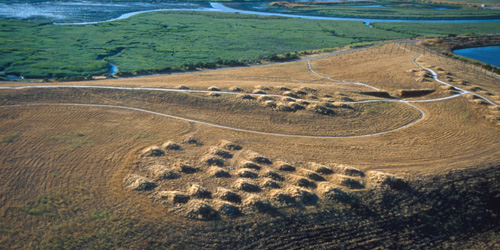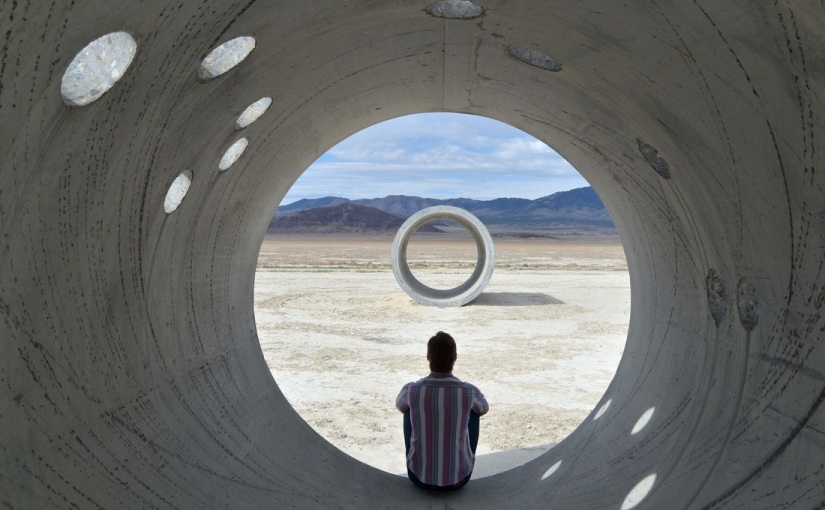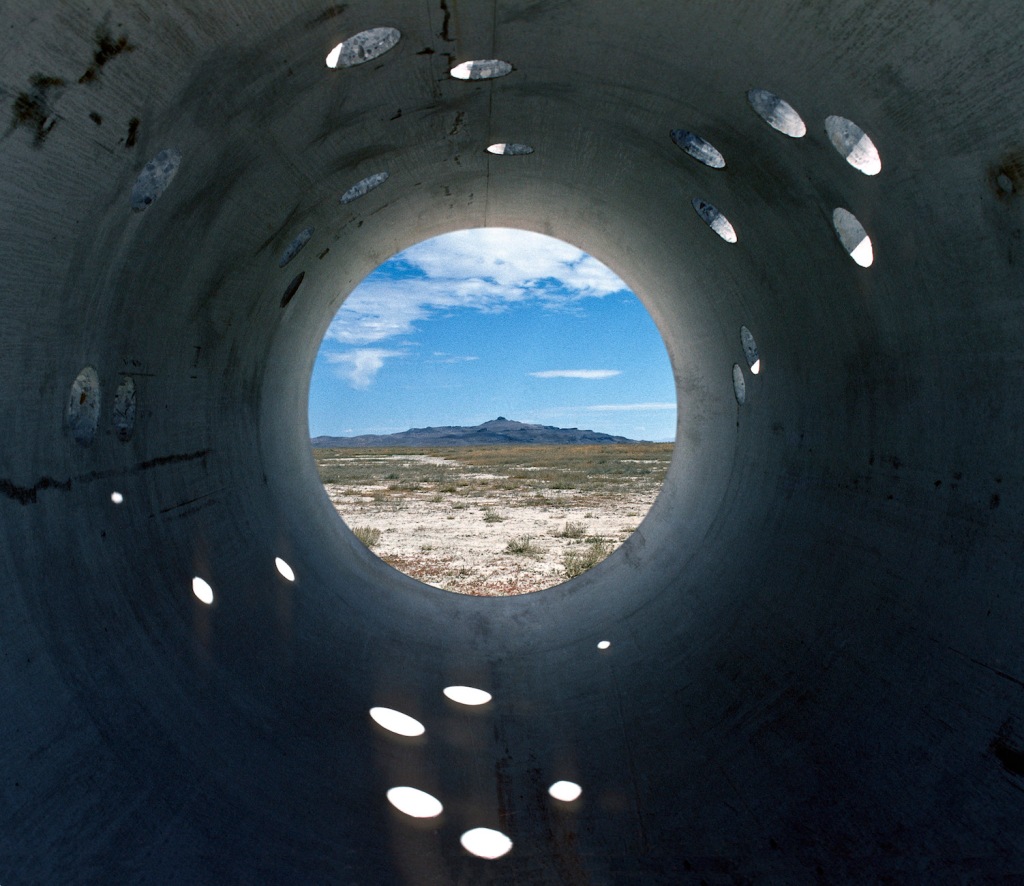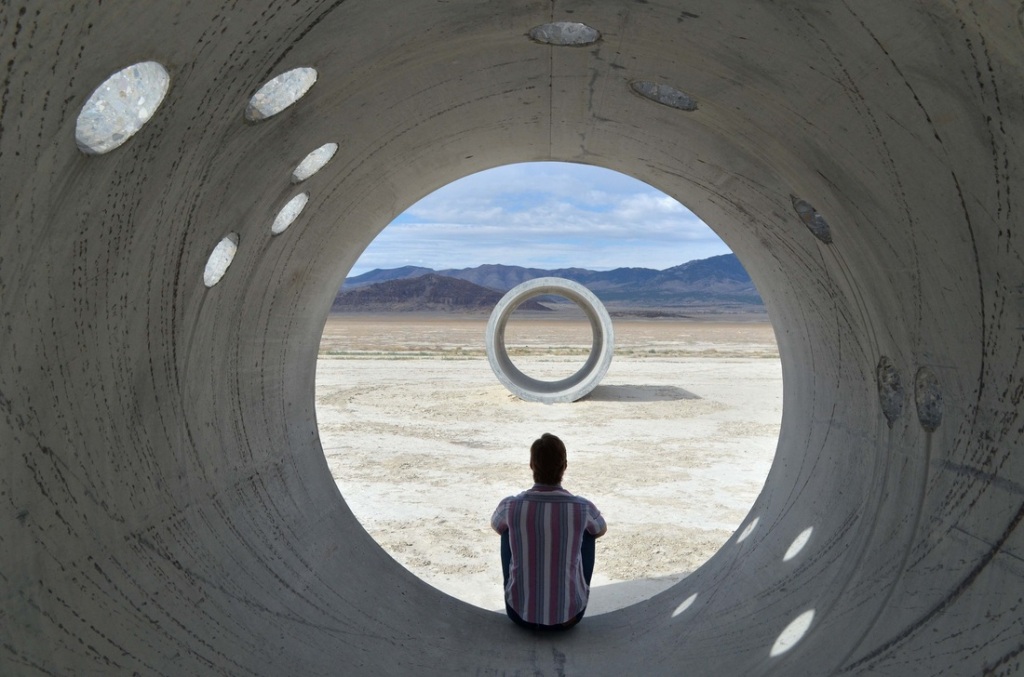Tag: Robert Smithson
(1938–1973) American artist and relevant author in relation to sculpture and land art.
Opportunists?
Landscape designers may see themselves as agents of mitigation and mediation, but are we really just opportunists? (…) Should landscape architects have more scruples than others? Landscape architects are no more holy than any other people and should neither place themselves nor be placed in a holier-than-thou position.
Saying that, I believe that we should be operating in a way that helps the earth – and all who inhabit it – in any way we can, and to give something back so we leave this world a better place than when we entered it. But I believe this to be true for everyone. However, the topic of the environment is very wide and broad, and there are many, many ways to contribute to this topic, from the heroic site-specific art pieces done by the ‘earthworks artists’ of the 1960s (such as Robert Smithson, Nancy Holt, Michael Heizer and Walter De Maria), to ecological research, to devoting oneself to saving the snail-darter. These are all within the purview of ‘landscape’ and all make contributions. In a field as broad as landscape architecture, it is important that we must recognize that there are equally broad ways of making contributions, and that one way is not necessarily superior to another. I am definitely an opportunist: I am always looking for opportunities to do something interesting. Given that the landscape is a much more complex, larger and more expensive canvas than most studio art, I must depend on others to supply my ‘canvas’.
Martha Schwartz, Designer, client and user (2005)
Nancy Holt, Sun Tunnels (1973-1976)
FIND THEM ON THE MAP
Walkingscapes
In Entropy and the New Monuments, written one year before the trip to Passaic, Smithson stated that certain minimal objects celebrate what Flavin called an “inactive history” and what physicists call “entropy” or “energy dispersion”, the measure of energy utilized when one state is transformed into another. They were objects that confirmed the phrase of Vladimir Nabokov, for Whom “the future is simply inverted obsolescence.” According to Smithson, “the new monuments, rather than reminding us of the past, seem to want to make us forget the future.” In the empty spaces, forgotten by their very inhabitants, he recognizes the most natural territary of forgetting; a landscape that has taken on the character of a new entropic nature. In the Tour the description of the territory doesn’t lead to ecological-environmental considerations regarding the destruction of the river or the industrial wastes that make the water putrid, there is a delicate balance between renunciation and accusation, between renunciation and contemplation. The judgement is exclusively aesthetic, not ethical, never ecstatic. There is no enjoyment, no satisfaction, no emotional involvement in walking through the nature of suburbia. The discourse starts with an acceptance of reality as it presents itself, and continues on a plane of general reflection in which Passaic becomes the emblem of the periphery of the occidental world, the place of scrap, of the production of a new landscape made of refuse and disruption. The monuments are not admonishments, but natural elements that are an integral part of this new landscape, presences that live immersed in an entropic territory: they create it, transform it and destroy it, they are monuments self-generated by the landscape, wounds man has imposed on nature, and which nature has absorbed, transforming their meaning, accepting them in a new nature and a new aesthetic. The new landscape that appears in suburbia calls, according to Smithson, for a new discipline capable of grasping the significance of the transformation and mutation from the natural to the artificial and vice versa: “We live in defined structures, we are surrounded by reference systems but nature dismantles them, taking them back to an earlier state of non-integrity. Artists today are starting to notice the strongly evanescent character of this progressive disintegration of structures, Claude Lévi-Strauss has proposed the founding of a new discipline of ‘entropology’. Artists and art critics should orient their efforts in this direction.”
Francesco Careri, Walkingscapes: Walking as an aesthetic practice (2002)
FIND IT ON THE MAP
Rundown
In a Smithson sculpture like Aslphalt Rundown (1969), in which truckload of the viscous material was poured down the gullied slope of a quarry near Rome, Hargreaves saw the expression of this contemporary conception of landscape. Although far from beautiful in any familiar sense, Hargreaves found such work deeply compelling for the way it brought time, gravity, erosion, human commerce, and the physical properties of matter all into play. ‘For the first time,’ Hargreaves recalled, “I understood that designed landscapes could be extraordinarily meaningful. The Smithson works reintroduced the concept of landscape as idea -something lost in the pursuit of the functional landscape- and opened a door to a world not yet fully explored and still expanding.
John Beardsley, Entropy and the New Landscapes (1996)
Robert Smithson, Asphalt Rundown (1969)
FIND IT ON THE MAP

George Hargreaves + Hargreaves Associates, Byxbee Park (1988)
FIND IT ON THE MAP
Arts in advance
At all times the arts of painting and sculpture have been in advance of that of architecture. The reason for this is simple; architecture, mother of the arts though she may be, is cumbersome. Buildings must serve a purpose, and that purpose is usually traditional; they are made of involved and complex materials; they pass through many hands during the long period from the creation of the idea to completion; and upon the completion they cannot be put under glass and are subject to the whims of the owner. If this appraisal applies to architecture, it applies still more to landscape design.
Geoffrey Alan Jellicoe, Landscape from Art (1961)
Robert Smithson, Spiral Jetty (1970)




























